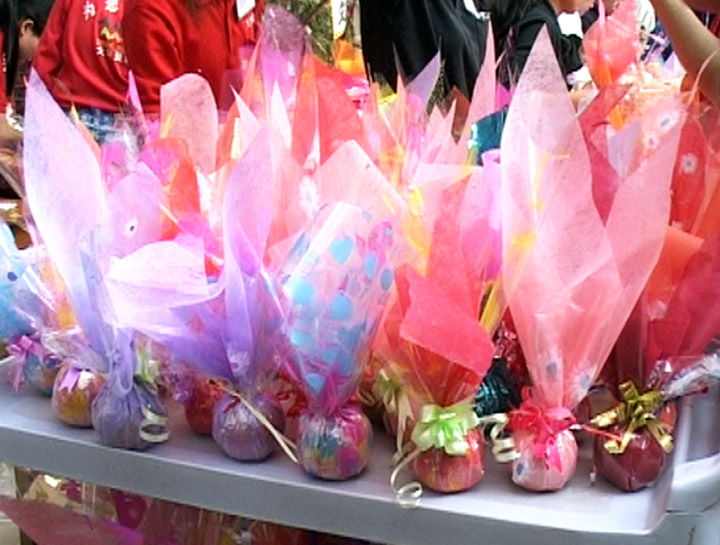Christmas in China
- Yoshika Lowe
- Dec 7, 2020
- 4 min read

A Brief History
China has been a predominately Buddhist country for centuries, however, Christianity was introduced in the 5th century. The first known Catholic (Nestorian) missionary to come to China was Olopen, a Syrian monk. He came from Persia in 635 AD. The Emperor, Tai Zhong, was very receptive to his teachings and gave permission for Olopen to preach in China and for a church to be built.
Ultimately, the first three missionary attempts to evangelize China failed to bear fruit. In 1805, the fourth attempt, had some success, but inadvertently led to the Boxer Rebellion and later the Anti-Christian Movement. Unfortunately, due to questionable practices and philosophies concerning the people of China and their culture, Christianity became a symbol of imperialism to many people.
Some missionaries believed and condoned the invasion of China due to the belief that it was an ‘evil’ country and needed to be conquered and made righteous. They also partnered with the East India Trading Co., which dealt heavily in opium and had a monopoly on trade to China. The reaction to many unfair practices by the Christian missionaries and the countries who sent them, was a desire to purge the country of Christians and all foreigners.
Hudson Taylor was an exception to the types of western missionaries that hurt their witness to the Chinese people. He founded the China Inland Mission, which was non-denominational, sensitive to the culture of the Chinese people and opposed the opium trade. He even adopted their style of dress—wearing native clothing. His life and ministry is an example of effective evangelistism—modeled and expoused by Paul: “Though I am free and belong to no man, I make myself a slave to everyone, to win as many as possible. To the Jews I became like a Jew, to win the Jews. To those under the law I became like one under the law (though I myself am not under the law), so as to win those under the law. To those not having the law I became like one not having the law (though I am not free from God’s law but am under Christ’s law), so as to win those not having the law. To the weak I became weak, to win the weak. I have become all things to all men so that by all possible means I might save some. I do all this for the sake of the gospel, that I may share in its blessings.”
Undeniably, one of the most influential Chinese missionaries of the 20th century was Watchman Nee. His life and ministry of suffering set an example for the Chinese people. He was a prolific writer and was greatly persecuted for his belief in Christ. His pioneering of the house church movement in China can be linked to the very survival of the current Christian Church in China.
The Cultural Revolution had a devastating effect on the people of China, yet the current estimate is that there are between thirty million and fifty million Christians in China. This is despite the fact that the Church in China has been persecuted for the past 25 years, and that there were less than 2 million believers (possibly less than a million) before the Cultural Revolution.
As a global market leader, China has the second largest economy in the world. It's economic growth has created great wealth for many, while increasing the disparity between rich and poor. China has many social challenges, including: the fatal effects of pollution; mental health issues (with the highest suicide rate in the world); vulnerable North Korean refugees; a staggering divorce rate; over 3 million children in orphanages; 13 million abortions per year; and millions of children abandoned or trafficked.

Christmas Today
While the Chinese New Year is the foremost winter holiday in China, Christmas is celebrated. Christians in China celebrate Christmas by decorating ‘trees of light’ with paper chains, paper lanterns and paper flowers. Bowls of tangerines and oranges are displayed to symbolize wealth and good fortune. Chinese children wait for ‘Christmas Old Man,’ which they call Dun Che Lao Ren (dwyn-chuh-lau-oh-run) and hang muslin stockings in anticipation of his visit. Fireworks are also a part of the Christmas celebration in China and Hong Kong.
Although China is not a Christian nation, Christmas has become very popular in recent years. If you visit China today, you will notice that more and more malls have all the trappings of a western Christmas. And Christmas in the ‘western’ style means commercialism and secularism. Some of the more humorous twists to a Chinese Christmas is that Santa is usually not alone at the mall, there are usually a group of Santas at any given time and they are often accompanied by his ‘sisters’ instead of elves, though they are dressed similar to Christmas elves.
A popular treat during this season are fancy cellophane wrapped apples, often with message like “Merry X-mas” printed on them. This is because the word for apple is similar to the word for Christmas Eve in Mandarin. Christmas has become so commercialized in China that Christmas Eve is the biggest shopping day of the year! Christmas day is not a public holiday in China, although it is in Hong Kong.
“Shengdan Kuai Le!" means Merry Christmas in Mandarin.
Prayer Point
Pray for continued Church growth and pure biblical teaching amid ongoing persecution. Pray for a renewed value for life to eradicate abortion, suicide, abandonment, and human trafficking. Pray against poverty that leads to most of these societal crises. Pray for the North Korean refugees seeking asylum in China. These refugees are in imminent danger of being deported back to North Korea, where they face torture and long-term detention in labor camps. Pray for the love of Christ to permeate the hearts and mind of people who have lost hope.







Comments